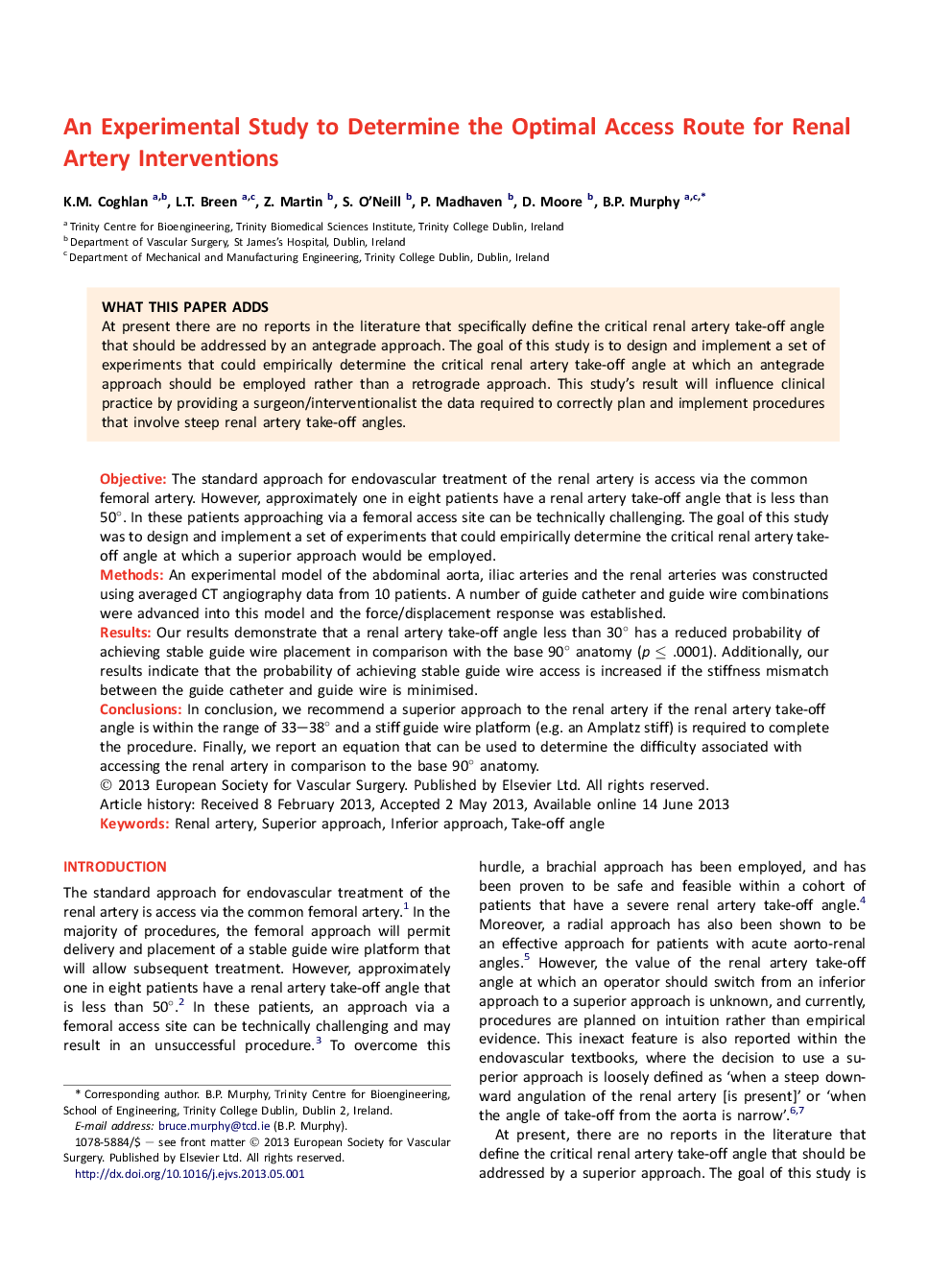| Article ID | Journal | Published Year | Pages | File Type |
|---|---|---|---|---|
| 2912762 | European Journal of Vascular and Endovascular Surgery | 2013 | 6 Pages |
ObjectiveThe standard approach for endovascular treatment of the renal artery is access via the common femoral artery. However, approximately one in eight patients have a renal artery take-off angle that is less than 50°. In these patients approaching via a femoral access site can be technically challenging. The goal of this study was to design and implement a set of experiments that could empirically determine the critical renal artery take-off angle at which a superior approach would be employed.MethodsAn experimental model of the abdominal aorta, iliac arteries and the renal arteries was constructed using averaged CT angiography data from 10 patients. A number of guide catheter and guide wire combinations were advanced into this model and the force/displacement response was established.ResultsOur results demonstrate that a renal artery take-off angle less than 30° has a reduced probability of achieving stable guide wire placement in comparison with the base 90° anatomy (p ≤ .0001). Additionally, our results indicate that the probability of achieving stable guide wire access is increased if the stiffness mismatch between the guide catheter and guide wire is minimised.ConclusionsIn conclusion, we recommend a superior approach to the renal artery if the renal artery take-off angle is within the range of 33–38° and a stiff guide wire platform (e.g. an Amplatz stiff) is required to complete the procedure. Finally, we report an equation that can be used to determine the difficulty associated with accessing the renal artery in comparison to the base 90° anatomy.
